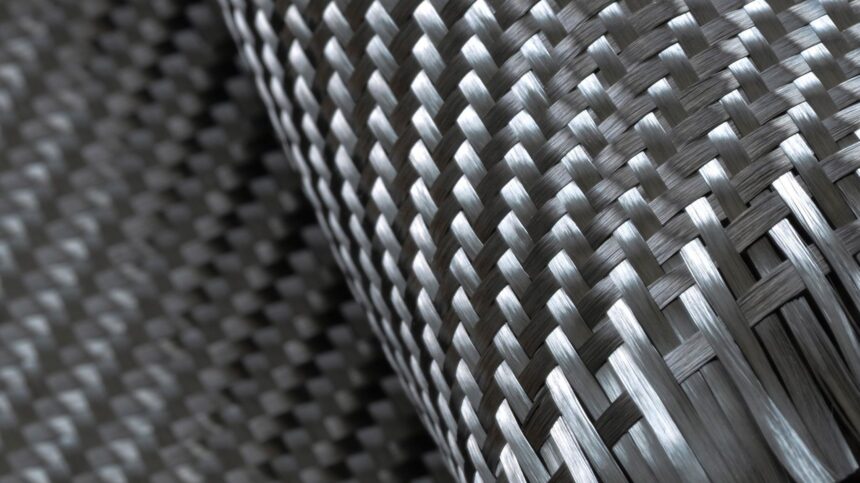In the ever-evolving world of materials science, Carbonnen has emerged as a groundbreaking element with a wide array of applications in modern technology. Carbonnen, a term derived from “carbon” and “innovative,” represents advanced carbon-based materials like graphene, carbon nanotubes, and carbon fibers. These materials boast unique properties such as extreme strength, lightweight, electrical conductivity, and thermal stability, making them invaluable in various industries.
In this blog post, we will explore the origins and evolution of Carbonnen, its innovative applications across different sectors, its environmental and economic impacts, its positive influence on health, and future prospects. Whether you’re a tech enthusiast, an industry professional, or simply curious about cutting-edge materials, this Article aims to deliver a comprehensive and captivating overview of Carbonnen and highlight its significance in contemporary society.
Historical Background
To understand the present and future potential of Carbonnen, it’s essential to delve into its historical background. The journey of Carbonnen began with the discovery of graphite and diamond, two naturally occurring forms of carbon, centuries ago. However, it was in the 20th century that scientists started unlocking the true potential of carbon-based materials.
Key Milestones in the Development of Carbonnen
- Discovery of Graphene (2004): The groundbreaking discovery of graphene, which is a single, atom-thick layer of carbon atoms in a hexagonal pattern, was made by Andre Geim and Konstantin Novoselov at the University of Manchester. This achievement marked a pivotal moment in scientific research and materials science. Graphene exhibited extraordinary properties, including exceptional electrical conductivity and mechanical strength.
- Advancements in Carbon Nanotubes (1991): Sumio Iijima’s discovery of carbon nanotubes in the early 1990s opened new avenues for nanotechnology. These tube-shaped structures exhibit exceptional tensile strength and electrical conductivity, making them perfect for a wide range of uses.
- Development of Carbon Fibers (1958): The development of carbon fibers, composed of thin strands of carbon atoms, revolutionized industries such as aerospace and automotive. Due to the high strength-to-weight ratio, it is very useful.
- Commercialization and Research Growth: Over the years, extensive research and commercialization efforts have led to the proliferation of Carbonnen-based materials in various fields, from electronics to medicine.
Applications in Various Industries
The versatile properties of Carbonnen have paved the way for its integration into numerous industries. Let’s explore some of the most innovative and impactful uses of Carbonnen in modern technology.
Technology
- Flexible Electronics: Graphene’s flexibility and conductivity make it an ideal material for flexible electronic devices, such as foldable smartphones, wearable sensors, and bendable displays. These advancements are revolutionizing our engagement with technology.
- Energy Storage: Researchers are using carbon-based materials to develop high-capacity batteries and supercapacitors. These energy storage solutions offer faster charging times, longer lifespans, and increased energy density, addressing the growing demand for efficient power sources.
- Data Storage: Carbon nanotubes are being explored for use in high-density data storage devices. Their small size and excellent electrical properties could lead to the development of next-generation memory technologies.
Aerospace
- Lightweight Structures: Carbon fibers are extensively useful in the aerospace industry to create lightweight yet incredibly strong components for aircraft and spacecraft. It reduces fuel consumption and enhances overall efficiency.
- Thermal Management: Carbonnen materials, such as graphene, are useful in thermal management systems for spacecraft. Their outstanding ability to conduct heat aids in the efficient dissipation of thermal energy, thereby safeguarding the integrity and functionality of essential components.
Automotive - Composite Materials: Carbon fibers are useful in the production of lightweight, high-strength composite materials for automotive applications. These materials enhance vehicle performance, fuel efficiency, and safety.
- Battery Technology: Carbonnen materials are being integrated into electric vehicle (EV) batteries to improve energy storage capacity and charging speed. Carbonnen materials play a critical role in advancing sustainable transportation. By incorporating lightweight yet durable materials in the construction of vehicles, it reduces overall fuel efficiency and lower emissions and vehicle weight. It not only decreases the environmental impact of transportation but also enhances its performance.
Medicine
- Drug Delivery: Carbon nanotubes and graphene oxide are being explored for targeted drug delivery systems. These materials can carry drugs directly to specific cells, increasing the efficacy of treatments while minimizing side effects.
- Medical Imaging: Carbonnen materials are used in advanced imaging techniques, such as MRI contrast agents and biosensors. Their unique properties enhance the accuracy and sensitivity of medical diagnostics.
Environmental Sustainability
- Water Purification: Carbonnen materials, such as activated carbon and graphene oxide, are useful in water purification systems. These materials efficiently remove contaminants and pollutants, ensuring access to clean and safe drinking water.
- Air Filtration: Carbon-based air filters are effective in capturing particulate matter and harmful gases, improving indoor air quality, and reducing the impact of air pollution on health
You may also like to read: The Role of Predovac in Enhancing Supply Chain Efficiency
Environmental and Economic Impact
Carbonnen not only offers technological advancements but also contributes to sustainability and economic growth.
Environmental Impact
- Reduced Carbon Footprint: The use of lightweight Carbonnen materials in industries like aerospace and automotive leads to reduced fuel consumption and emissions, helping combat climate change.
- Efficient Resource Utilization: Carbonnen materials, such as graphene and carbon nanotubes, are produced using relatively abundant and sustainable resources, reducing the environmental impact of resource extraction.
- Pollution Mitigation: Carbonnen’s applications in water purification and air filtration contribute to cleaner environments and healthier ecosystems.
Economic Impact
- Job Creation: The development and commercialization of Carbonnen materials have led to the creation of jobs in research, manufacturing, and various industries, boosting economic growth.
- Market Growth: Market of Carbonnen will grow significantly in the coming years, driven by increasing demand for advanced materials in technology, aerospace, automotive, and healthcare sectors.
- Innovation and Competitiveness: Companies that invest in Carbonnen technologies gain a competitive edge by offering innovative products and solutions, driving industry advancement and economic prosperity.
Positive Impact of Carbonnen on Health
Carbonnen’s influence extends to the field of healthcare, where it offers several positive impacts on health and well-being.
- Advanced Medical Treatments: Carbonnen materials are revolutionizing medical treatments, enabling precise drug delivery, improved imaging techniques, and innovative therapies for various diseases.
- Enhanced Diagnostics: Carbonnen-based biosensors and imaging agents enhance the accuracy and early detection of medical conditions, leading to more effective treatments and better patient outcomes.
- Minimized Side Effects: Targeted drug delivery systems using Carbonnen materials reduce the systemic side effects of medications, improving the quality of life for patients undergoing treatment.
Future Prospects
The future of its technology holds immense promise and potential. Here are some exciting prospects:
- Smart Materials: Researchers are exploring the development of smart materials that can self-heal, change properties in response to environmental conditions, and adapt to various applications.
- Quantum Computing: Carbonnen materials, such as graphene, are being investigated for their potential in quantum computing. These materials could revolutionize computing power and speed.
- Sustainable Energy: Carbonnen materials will play a crucial role in advancing sustainable energy solutions, including more efficient solar cells, hydrogen storage, and energy-efficient devices.
- Space Exploration: As space exploration continues to expand, Carbonnen materials will be essential for building lightweight, durable, and thermally stable components for spacecraft and habitats.
Conclusion
In conclusion, Carbonnen represents a remarkable advancement in materials science with far-reaching applications in modern technology. From flexible electronics and aerospace innovations to sustainable transportation and healthcare breakthroughs, Carbonnen’s impact is profound and transformative. Its contributions to environmental sustainability, economic growth, and improved health are undeniable.
As we look to the future, the potential of Carbonnen technology remains boundless. By continuing to invest in research and development, we can harness the full potential of Carbonnen for more sustainable world.
Frequently Asked Questions (FAQs)
Question 1: What is Carbonnen?
Answer 1: It refers to advanced carbon-based materials, such as graphene, carbon nanotubes, and carbon fibers.
Question 2: How does Carbonnen contribute to sustainability?
Answer 2: Carbonnen materials reduce carbon footprints and enhance resource utilization. They also aid in pollution mitigation through applications in lightweight structures, water purification, and air filtration.
Question 3: What industries benefit from Carbonnen technology?
Answer 3: Carbonnen technology is used in various industries, including technology, aerospace, automotive, medicine, and environmental sustainability.
Question 4: What are some future prospects of Carbonnen technology?
Answer 4: Future prospects include the development of smart materials, advancements in quantum computing, sustainable energy solutions, and contributions to space exploration.
Question 5: How does Carbonnen impact healthcare?
Answer 5: Carbonnen materials improve medical treatments, diagnostics, and targeted drug delivery systems, leading to better patient outcomes and minimized side effects.







